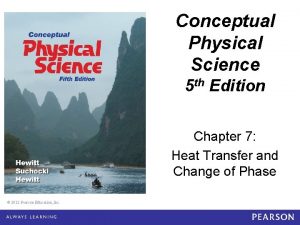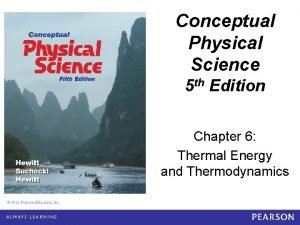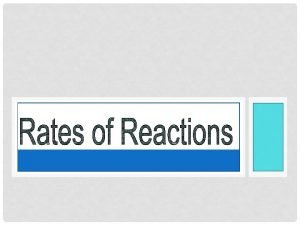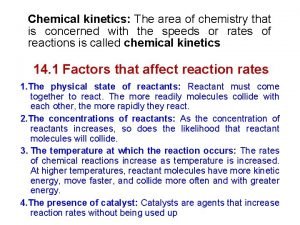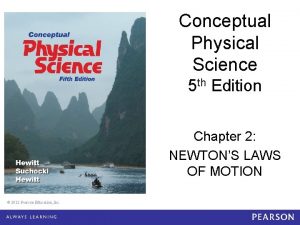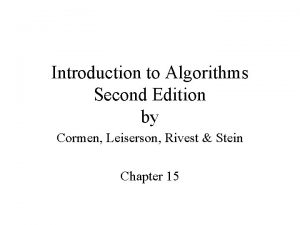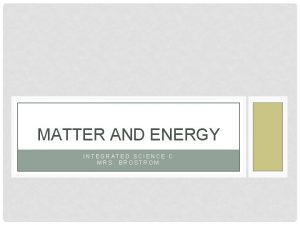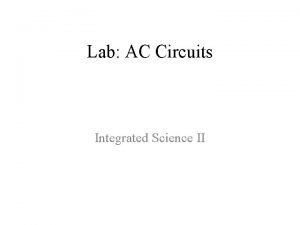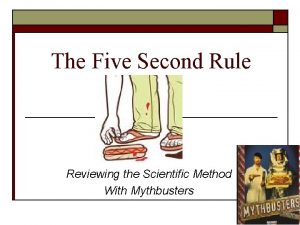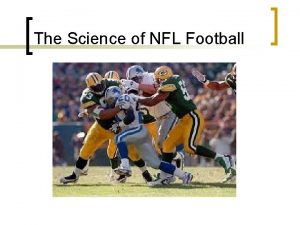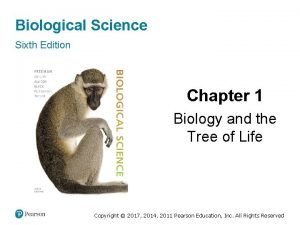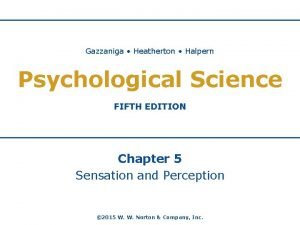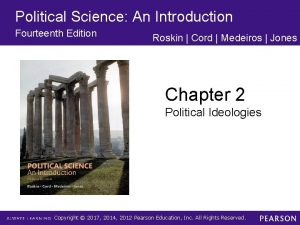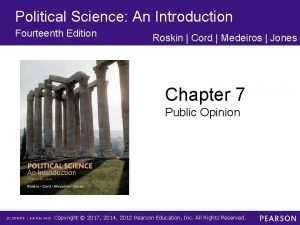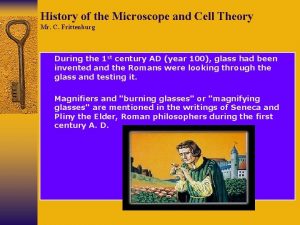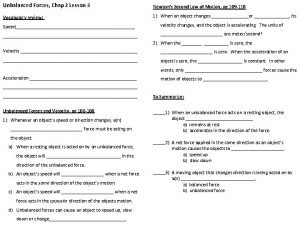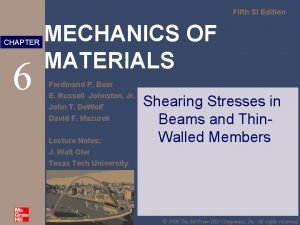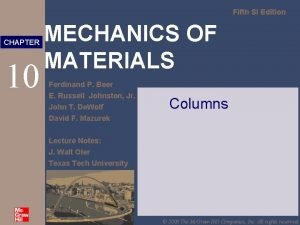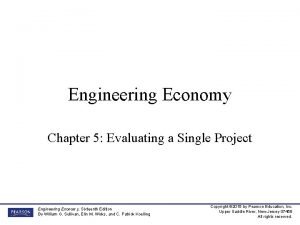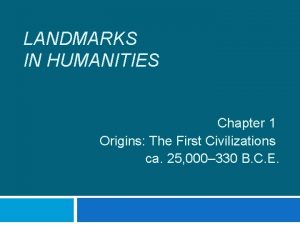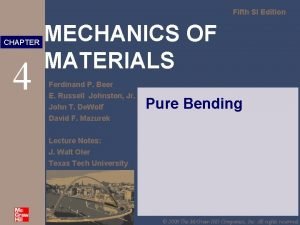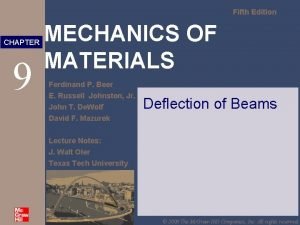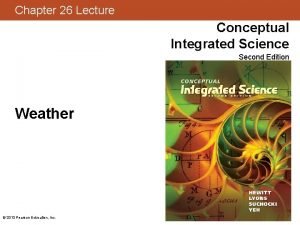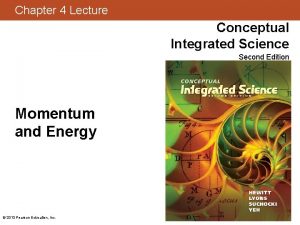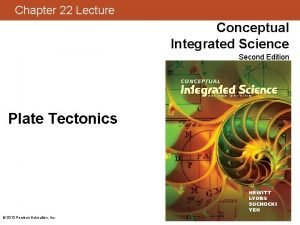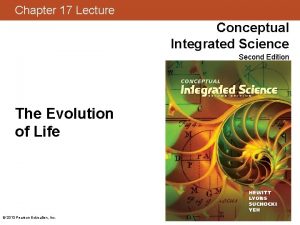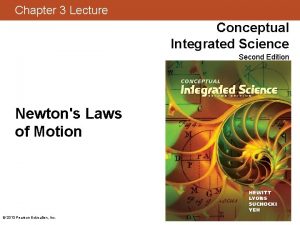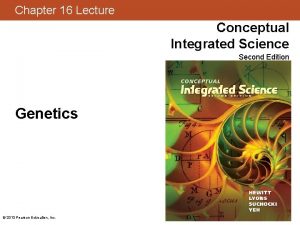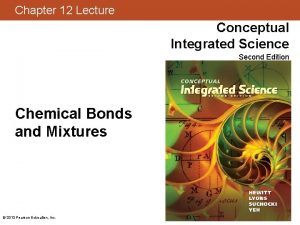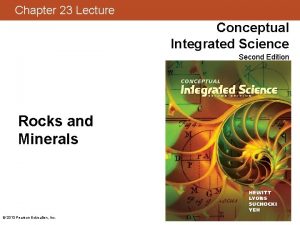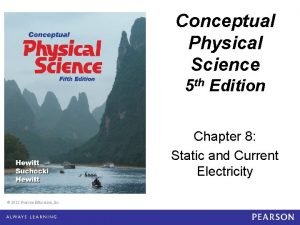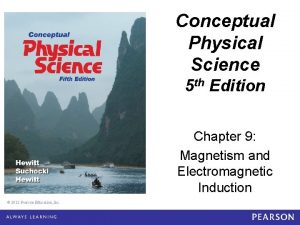Chapter 14 Lecture Conceptual Integrated Science Second Edition



































































- Slides: 67

Chapter 14 Lecture Conceptual Integrated Science Second Edition Organic Compounds © 2013 Pearson Education, Inc.

This lecture will help you understand: • • Organic Chemistry Hydrocarbons Unsaturated Hydrocarbons Functional Groups Alcohols, Phenols, and Ethers Amines and Alkaloids Carbonyl Compounds Polymers © 2013 Pearson Education, Inc.

Organic Chemistry • Organic chemistry is the branch of chemistry that involves the study of carbon-containing chemical compounds. • An organic compound is a carbon-containing chemical compound. More than 13 million organic compounds are known. © 2013 Pearson Education, Inc.

Organic Chemistry • Carbon atoms connect with one another through strong and stable covalent bonds. © 2013 Pearson Education, Inc.

Organic Chemistry C C 347 k. J/mol C C C N N 159 k. J/mol N N C N O O O © 2013 Pearson Education, Inc. O N O O 138 k. J/mol S S 226 k. J/mol S

Organic Chemistry • Carbon atoms also readily form bonds with many other types of atoms. This provides for a nearly infinite number of different kinds of organic compounds. © 2013 Pearson Education, Inc.

Hydrocarbons • A hydrocarbon is a chemical compound that contains only hydrogen and carbon. © 2013 Pearson Education, Inc.

Hydrocarbons © 2013 Pearson Education, Inc.

Hydrocarbons • Structural isomers are molecules that have the same molecular formula but different configurations. © 2013 Pearson Education, Inc.

Hydrocarbons • A configuration is the specific way in which the atoms of a molecule are connected to one another. "configuration" = "connectivity" • Conformation is the spatial orientation of a single configuration. © 2013 Pearson Education, Inc.

© 2013 Pearson Education, Inc. Formula Number of possible isomers C 5 H 12 3 C 6 H 14 5 C 7 H 16 9 C 8 H 18 18 C 10 H 22 75 C 20 H 42 366, 319

Hydrocarbons CHECK YOUR NEIGHBOR What is the chemical formula for the following structure? H H A. B. C. D. C 3 H 8 C 4 H 10 C 5 H 12 C 6 H 14 c c H H H Explain your answer to your neighbor. © 2013 Pearson Education, Inc.

Hydrocarbons – Fractional Distillation © 2013 Pearson Education, Inc.

Unsaturated Hydrocarbons • Carbon always forms four bonds. © 2013 Pearson Education, Inc.

Unsaturated Hydrocarbons • Some of carbon's four bonds, however, may be within multiple bonds. © 2013 Pearson Education, Inc.

Unsaturated Hydrocarbons • An unsaturated hydrocarbon is a hydrocarbon that contains one or more multiple bonds. – A special case of an unsaturated hydrocarbon is the benzene ring. © 2013 Pearson Education, Inc.

Unsaturated Hydrocarbons CHECK YOUR NEIGHBOR What is the chemical formula for the following structure? H H H A. B. C. D. C 5 H 10 C 5 H 12 C 6 H 14 c c H H c H c H H H Explain your answer to your neighbor. © 2013 Pearson Education, Inc.

• Compounds having only single bonds between carbon atoms are said to be saturated compounds. • The ending –ane is used to name saturated compounds (single bonds) • For compounds containing a carbon-carbon double bond, the suffix –ene is used • For compounds containing a carbon-carbon triple bond, the suffix -yne is used








• The existence of two or more substance with the same molecular formula, but different structures, is called isomerism • Theses structures are called isomers

• Consider butane with the formula C 4 H 10 • There are 2 structures that can be written for this formula. – 1. Butane – 2. methylpropane – These are examples of structural isomers or skeleton isomers, since it is the carbon chain that is altered



• A second type of isomerism is positional isomerism. • This is when 2 compounds that differ only in the position of something such as a double bond or an atom other than hydrogen and carbon.

• The first 3 are all named hexene • We name isomers such as these by specifying on which carbon atom the double bond begins • So you start numbering from the end, giving the double bond the lowest number • Name the first 3 compounds above.

• First one is named 1 -hexene • 2 nd one is named 2 -hexene • 3 rd one is named 3 -hexene

Functional Groups • A heteroatom is any atom other than hydrogen or carbon in an organic molecule. • A functional group is a combination of carbon, hydrogen, and heteroatoms that behave as a single unit. – Organic molecules are classified by the functional groups they contain. © 2013 Pearson Education, Inc.

Functional Groups © 2013 Pearson Education, Inc.

Functional Groups CHECK YOUR NEIGHBOR In which of the following structures is carbon bonded five times? A. B. C. Explain your answer to your neighbor. © 2013 Pearson Education, Inc. D.

Alcohols, Phenols, and Ethers • Alcohols contain the hydroxyl group. Hydroxyl group © 2013 Pearson Education, Inc.

Alcohols, Phenols, and Ethers Methanol (bp 65°C) © 2013 Pearson Education, Inc. Ethanol (bp 78°C) 2 -Propanol (bp 97°C)

Alcohols, Phenols, and Ethers • Phenols contain the phenol group. Phenol group © 2013 Pearson Education, Inc.

Alcohols, Phenols, and Ethers • Phenols are acidic © 2013 Pearson Education, Inc.

Alcohols, Phenols, and Ethers 4 -n-Hexylresorcinol © 2013 Pearson Education, Inc. Thymol

Alcohols, Phenols, and Ethers • Ethers contain the ether group, an oxygen atom bonded to two carbon atoms. Ether group © 2013 Pearson Education, Inc.

Alcohols, Phenols, and Ethers Dimethyl ether (bp − 25°C) © 2013 Pearson Education, Inc. Diethyl ether

Amines and Alkaloids • Amines form alkaline solutions. Amine group © 2013 Pearson Education, Inc.

Alcohols, Phenols, and Ethers Ethyl amine © 2013 Pearson Education, Inc. Hydroxide ion

Alcohols, Phenols, and Ethers Caffeine © 2013 Pearson Education, Inc. Phosphoric acid Caffeine salt Water soluble

Amines and Alkaloids CHECK YOUR NEIGHBOR Which of the following compounds should have a higher boiling point? O N H Structure A A. B. C. D. Structure B Structure A Structure B Both should have the same boiling point. There is no way to tell. Explain your answer to your neighbor. © 2013 Pearson Education, Inc.

Carbonyl Compounds • A carbonyl is a carbon atom double bonded to an oxygen atom. Carbonyl © 2013 Pearson Education, Inc.

Carbonyl Compounds Ketone group © 2013 Pearson Education, Inc. Aldehyde group

Carbonyl Compounds Acetone © 2013 Pearson Education, Inc. Acetaldehyde

Carbonyl Compounds Cinnamonaldehyde Vanillin © 2013 Pearson Education, Inc. Benzaldehyde

Carbonyl Compounds Amide group © 2013 Pearson Education, Inc.

Carbonyl Compounds N, N-Diethyl-m-toluamide DEET © 2013 Pearson Education, Inc.

Carbonyl Compounds Carboxyl group © 2013 Pearson Education, Inc.

Carbonyl Compounds Aspirin Salicylic acid © 2013 Pearson Education, Inc. Acetylsalicylic acid

Carbonyl Compounds Ester group © 2013 Pearson Education, Inc.

Carbonyl Compounds CH 3 OH H 2 SO 4 Salicylic acid Methyl salicylate (wintergreen) © 2013 Pearson Education, Inc.

Carbonyl Compounds Penicillin © 2013 Pearson Education, Inc.

Carbonyl Compounds CHECK YOUR NEIGHBOR The amino acid lysine is shown below. What functional group must be removed in order to produce the very smelly amine cadaverine, which is 1, 5 -pentanediamine? A. B. C. D. The hydrogen (shown) must be removed and replaced with an amino (NH 2) group. Lysine is 1, 5 -pentanediamine. Nothing has to be removed. The carboxyl group must be removed and replaced with a hydrogen. One amino group must be removed and replaced with a hydrogen. Explain your answer to your neighbor. © 2013 Pearson Education, Inc.

Polymers • A polymer is a very long organic molecule made by the joining together of smaller organic molecule units known as monomers. Monomer © 2013 Pearson Education, Inc. Monomer

Polymers • An addition polymer is a polymer whose mass is equal to the sum of the masses of the monomer units. H H H H H C C C C C H H © 2013 Pearson Education, Inc. H H H H

Polymers H H H C C C H H H Ethylene Polyethylene © 2013 Pearson Education, Inc. Ethylene

Polymers – tough plastic H H H C C C H CH 3 H CH 3 Propylene Propylene Polypropylene © 2013 Pearson Education, Inc. Propylene

Polymers - PVC © 2013 Pearson Education, Inc.

Polymers • A condensation polymer is a polymer formed when the joining of monomer units is accompanied by the loss of a small molecule, such as water. © 2013 Pearson Education, Inc.

Polymers © 2013 Pearson Education, Inc.

Polymers • Many of the natural product molecules synthesized by plants are formed by the joining together of isoprene monomers via an addition polymerization. A good example is the flavoring molecule citral, which is made of two isoprene units. Find and circle these units in the structure shown to the right. Isoprene (2 -methyl-1, 3 -butadiene) © 2013 Pearson Education, Inc. Citral

Polymers • Beta-carotene is a natural addition polymer made of eight isoprene units. Find and circle these units in the structure shown below. Beta-carotene Isoprene (2 -methyl-1, 3 -butadiene) © 2013 Pearson Education, Inc.
 Conceptual integrated science explorations
Conceptual integrated science explorations Conceptual integrated science
Conceptual integrated science When air rapidly expands its temperature normally
When air rapidly expands its temperature normally Bimetallic strip
Bimetallic strip Conceptual physical science 5th edition
Conceptual physical science 5th edition 01:640:244 lecture notes - lecture 15: plat, idah, farad
01:640:244 lecture notes - lecture 15: plat, idah, farad Second order integrated rate law
Second order integrated rate law Rate constant units
Rate constant units One of my favorite subjects
One of my favorite subjects Ibp and imc
Ibp and imc Conceptual physical science practice sheet chapter 2
Conceptual physical science practice sheet chapter 2 27 miles per gallon into kilometers per liter
27 miles per gallon into kilometers per liter Advanced word power second edition answers
Advanced word power second edition answers Accounting principles second canadian edition
Accounting principles second canadian edition Accounting principles second canadian edition
Accounting principles second canadian edition Accounting principles second canadian edition
Accounting principles second canadian edition Clear thinking and writing answer key
Clear thinking and writing answer key Accounting principles second canadian edition
Accounting principles second canadian edition Kaufman test of educational achievement second edition
Kaufman test of educational achievement second edition Introduction to algorithms 2nd ed
Introduction to algorithms 2nd ed In company second edition
In company second edition Wechsler individual achievement test second edition
Wechsler individual achievement test second edition Ten steps to advanced reading answer key
Ten steps to advanced reading answer key Klein
Klein Using mis (10th edition) 10th edition
Using mis (10th edition) 10th edition Report
Report Conceptual framework levels
Conceptual framework levels Physical science lecture notes
Physical science lecture notes What is matter in integrated science
What is matter in integrated science Lonestar nursing
Lonestar nursing Investigating conductors lab report
Investigating conductors lab report Chs hcpss
Chs hcpss Mythbusters 5 second rule
Mythbusters 5 second rule Newton's first law of motion - science of nfl football
Newton's first law of motion - science of nfl football Chemistry the central science 14th edition
Chemistry the central science 14th edition Biological science 6th edition
Biological science 6th edition Psychological science 5th edition
Psychological science 5th edition The fundamentals of political science research 2nd edition
The fundamentals of political science research 2nd edition Political science 14th edition
Political science 14th edition Political science 14th edition
Political science 14th edition Science power 9 atlantic edition
Science power 9 atlantic edition What is conceptual framework of science education
What is conceptual framework of science education Management fifteenth edition
Management fifteenth edition Intro to human resource management
Intro to human resource management Human resource management lecture chapter 1
Human resource management lecture chapter 1 Chapter 15 section 2
Chapter 15 section 2 Second great awakening apush chapter 15
Second great awakening apush chapter 15 Chapter 2 lesson 3 newton's second law
Chapter 2 lesson 3 newton's second law Organizational behavior 18th edition chapter 1
Organizational behavior 18th edition chapter 1 Organic chemistry (3rd) edition chapter 1 problem 16s
Organic chemistry (3rd) edition chapter 1 problem 16s Beer johnston
Beer johnston Chapter 7 beer
Chapter 7 beer Mechanics of materials 7th edition solutions chapter 6
Mechanics of materials 7th edition solutions chapter 6 Mechanics of materials chapter 5
Mechanics of materials chapter 5 Mechanics of materials chapter 10 solutions pdf
Mechanics of materials chapter 10 solutions pdf Everything's an argument 8th edition chapter 1 summary
Everything's an argument 8th edition chapter 1 summary Ifsta 7th edition chapter 6
Ifsta 7th edition chapter 6 Engineering economy 16th edition solution manual chapter 5
Engineering economy 16th edition solution manual chapter 5 Engineering economy 16th edition chapter 4 solutions
Engineering economy 16th edition chapter 4 solutions Business essentials 12th edition
Business essentials 12th edition Facial feedback hypothesis
Facial feedback hypothesis Prehospital emergency care 11th edition chapter 1
Prehospital emergency care 11th edition chapter 1 Group cohesiveness and performance
Group cohesiveness and performance Organic chemistry david klein 3rd edition
Organic chemistry david klein 3rd edition Landmark in humanities 5th edition
Landmark in humanities 5th edition Berk 8th edition
Berk 8th edition Beer johnston
Beer johnston Ferdinand beer
Ferdinand beer


